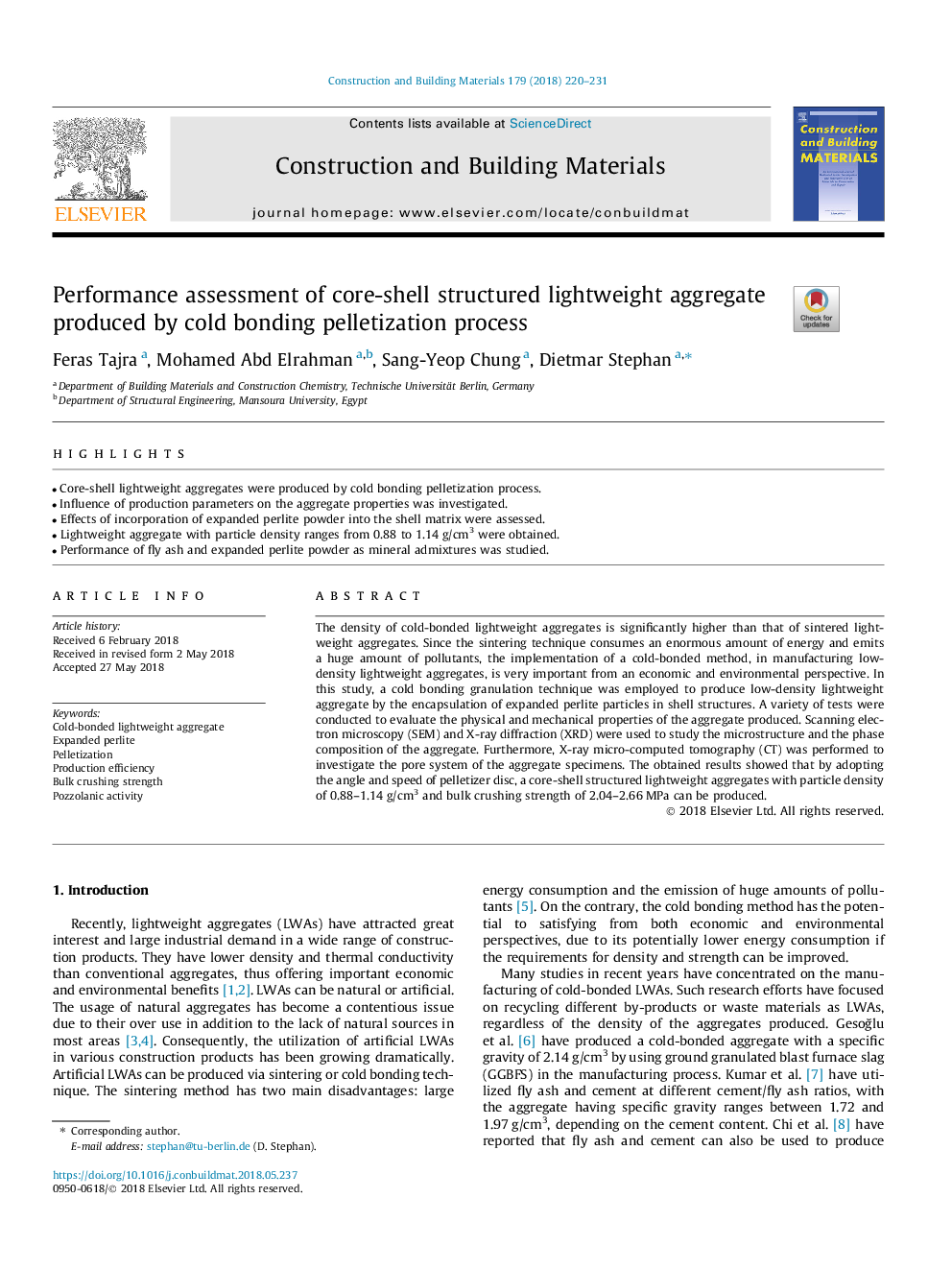| Article ID | Journal | Published Year | Pages | File Type |
|---|---|---|---|---|
| 6712661 | Construction and Building Materials | 2018 | 12 Pages |
Abstract
The density of cold-bonded lightweight aggregates is significantly higher than that of sintered lightweight aggregates. Since the sintering technique consumes an enormous amount of energy and emits a huge amount of pollutants, the implementation of a cold-bonded method, in manufacturing low-density lightweight aggregates, is very important from an economic and environmental perspective. In this study, a cold bonding granulation technique was employed to produce low-density lightweight aggregate by the encapsulation of expanded perlite particles in shell structures. A variety of tests were conducted to evaluate the physical and mechanical properties of the aggregate produced. Scanning electron microscopy (SEM) and X-ray diffraction (XRD) were used to study the microstructure and the phase composition of the aggregate. Furthermore, X-ray micro-computed tomography (CT) was performed to investigate the pore system of the aggregate specimens. The obtained results showed that by adopting the angle and speed of pelletizer disc, a core-shell structured lightweight aggregates with particle density of 0.88-1.14â¯g/cm3 and bulk crushing strength of 2.04-2.66â¯MPa can be produced.
Related Topics
Physical Sciences and Engineering
Engineering
Civil and Structural Engineering
Authors
Feras Tajra, Mohamed Abd Elrahman, Sang-Yeop Chung, Dietmar Stephan,
